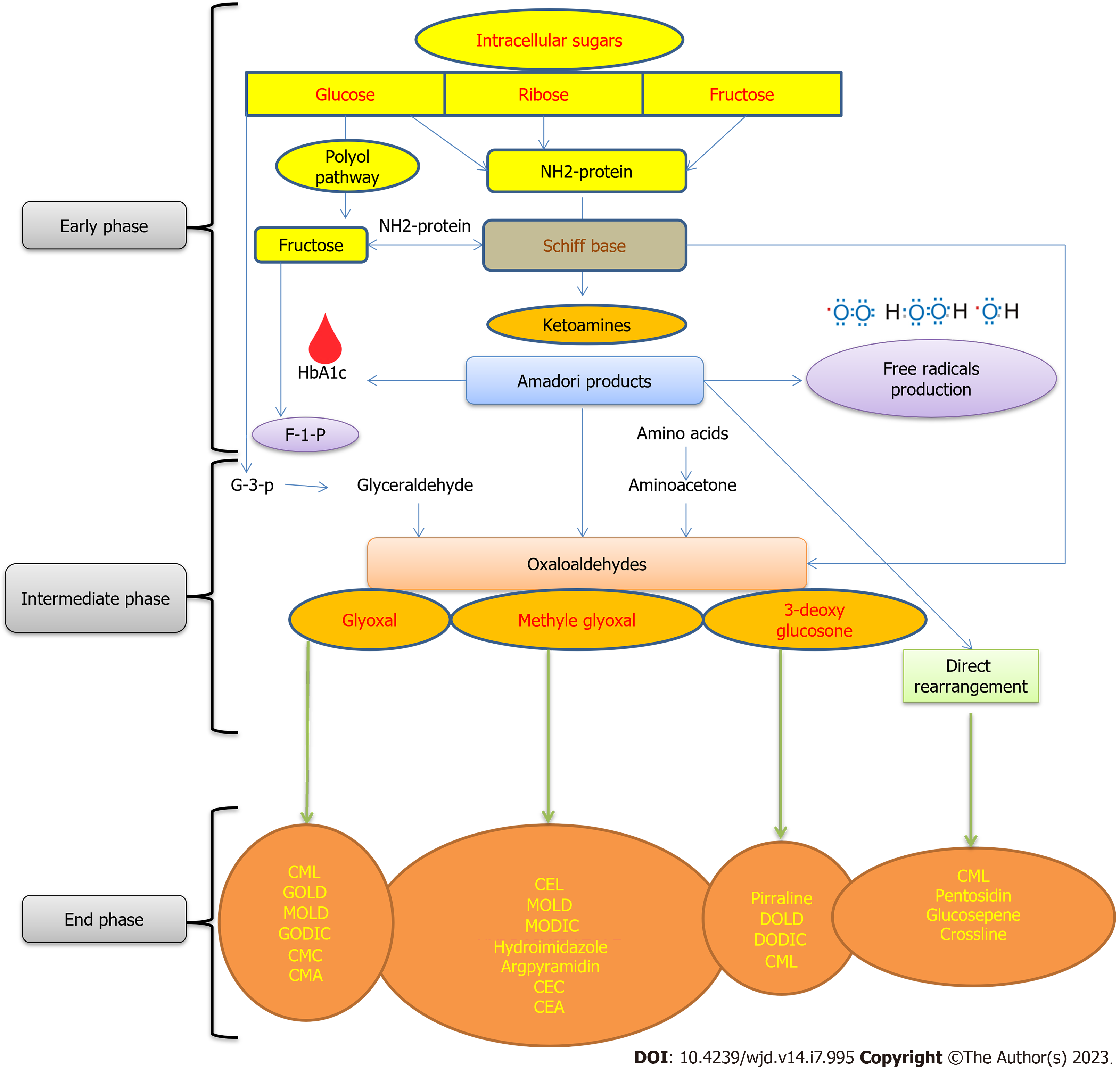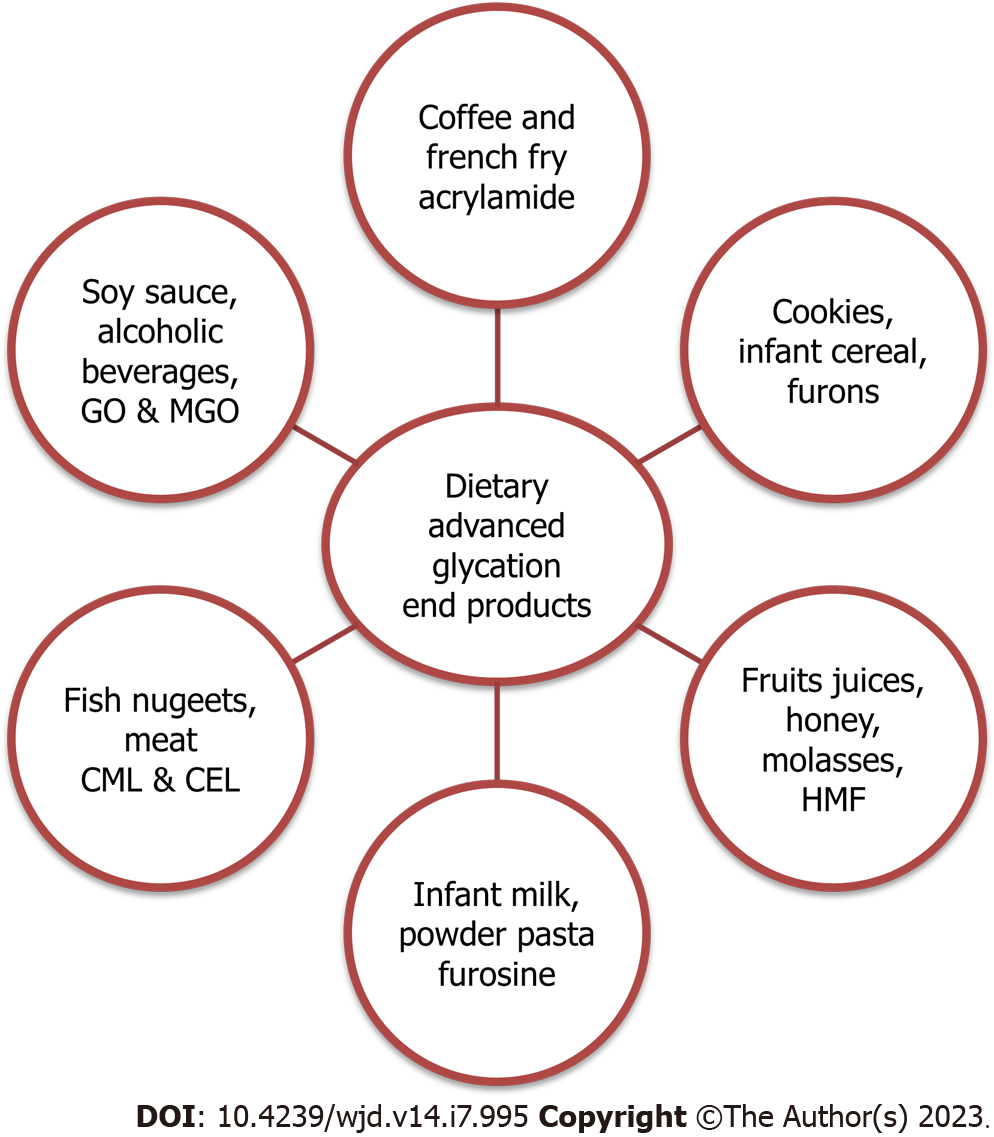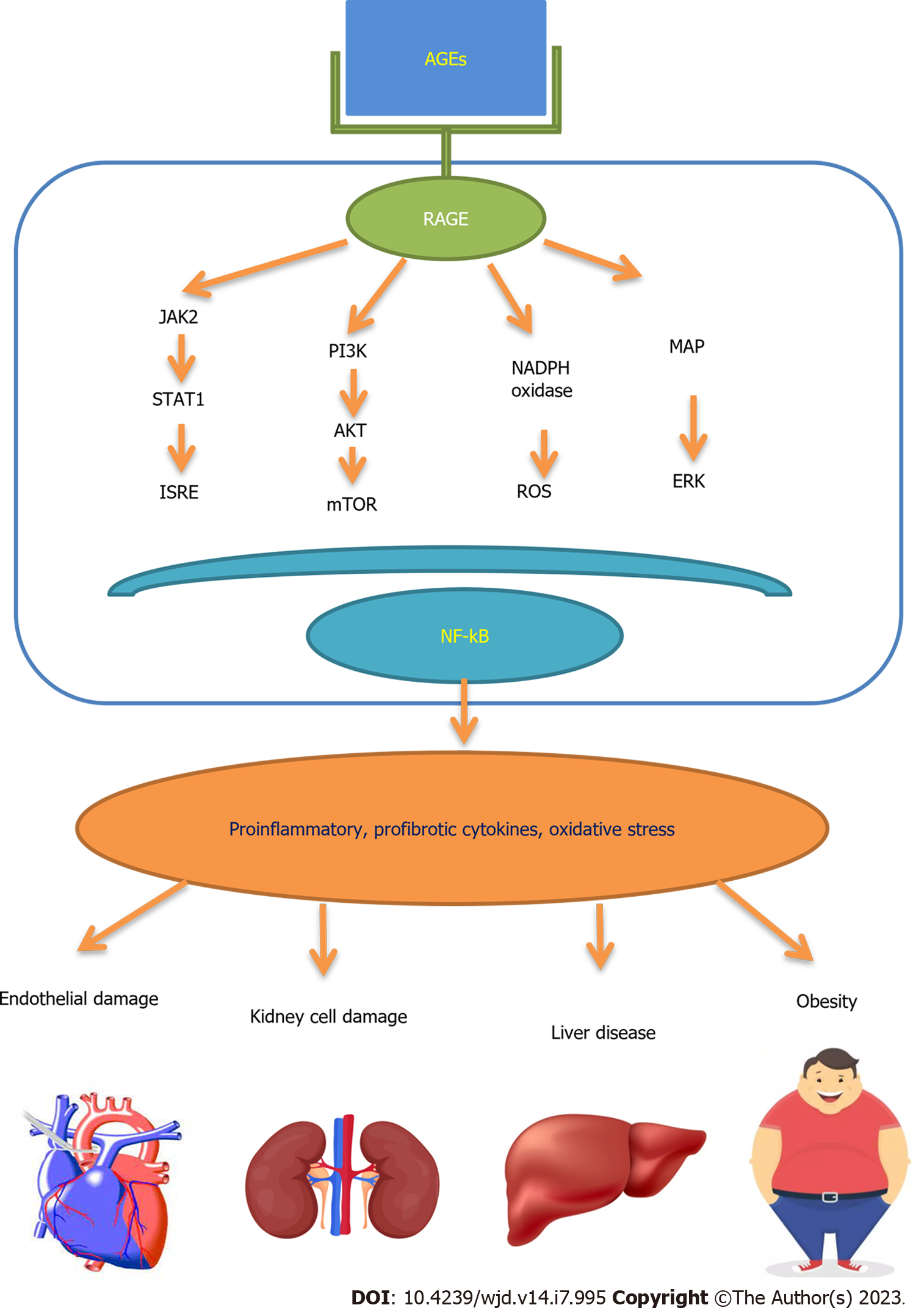Copyright
©The Author(s) 2023.
World J Diabetes. Jul 15, 2023; 14(7): 995-1012
Published online Jul 15, 2023. doi: 10.4239/wjd.v14.i7.995
Published online Jul 15, 2023. doi: 10.4239/wjd.v14.i7.995
Figure 1 Factors involved in accelerating advanced glycation end product formation and accumulation in the body.
CEA: N7–(1-carboxyethyl)arginine; CEC: Carboxyethyl cysteine; CEL: N’-(1-carboxyethyl)lysine; CML: Carboxymethyl-lysine; MODIC: 2-ammonio-6-({2-[4-ammonio-5-oxido-5-oxopently)amino]4-methyl-4,5-dihydro-1H imidazol-5 ylidene}amino)hexanoate; MOLD: Methylglyoxal-lysine dimer; DODIC: N6-{2-{[(4S)-4-ammonio-5-oxido-5-oxopentyl]amino}-5-[(2S,3R)-2,3,4-trihydroxybutyl]- 3,5-dihydro-4H-imidazol-4-ylidene}-L-lysinate; DOLD: 1,3-, di(N’-lysino)-4-(2,3,4-trihydroxybutyl)-imidazolium.
Figure 2 Sources of dietary advanced glycation end products.
CEL: Carboxyethyl-lysine; CML: Carboxymethyl-lysine; GO: Glyoxal; HMF: Hydroxymethylfurfural; MGO: Methylglyoxal.
Figure 3 Advanced glycation end products, advanced glycation end products receptor mediated pathways, production of cytokines, oxidative stress and organ involvement.
AGEs: Advanced glycation end products; ERK: Extracellular signal regulated kinase; ISRE: Interferon-sensitive response element; JAK: Janus kinase; PI3K: Phosphoinositide 3-kinase; mTOR: Mammalian target of rapamycin; RAGE: Advanced glycation end products receptor; ROS: Reactive oxygen species.
- Citation: Khan MI, Ashfaq F, Alsayegh AA, Hamouda A, Khatoon F, Altamimi TN, Alhodieb FS, Beg MMA. Advanced glycation end product signaling and metabolic complications: Dietary approach. World J Diabetes 2023; 14(7): 995-1012
- URL: https://www.wjgnet.com/1948-9358/full/v14/i7/995.htm
- DOI: https://dx.doi.org/10.4239/wjd.v14.i7.995















